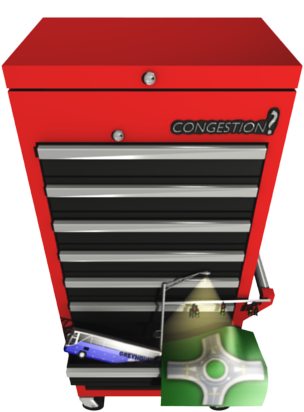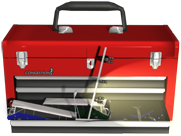
Managing Congestion
Flexible Work
Land-Use Planning
Walking and Biking
Moving Freight
Moving People
Roadway Design
Traffic Signals & Technology
Adding Travel Lanes
Quality of Travel
Data & Measurements
Funding
Traffic & Travel Info
- 2+1 Roads
- Access Management
- Bike & Pedestrian Facilities
- Carpooling, Vanpooling & Slugging
- CMAQ Funds
- Congestion Management Systems
- Congestion Measures
- Continuous Flow Intersection
- Continuous Green "T"
- Context Sensitive Design
- Corridor Planning
- Density and Mixing Land Uses
- Designing Transit into Highway Projects
- Diverging Diamond Interchange
- Effects of Bypasses on Communities
- Flextime
- Freeway Lane Management
- This Page Contains information on:
- Bus-Only Lanes
- Congestion (value) Pricing
- HOT & HOV Lanes
- Managed Lanes
- Freight
- Frontage & Backage Roads
- Highway Capacity Manual
- Incident Management Systems
- Indiana
- Intelligent Transportation Systems
- Ky Six Year Highway Plan Process
- Kentucky
- Large Urban Transit Systems
- This Page Contains information on:
- Bus-Rapid Transit
- Express Bus
- Light Rail Transit
- Lexington
- Louisville
- Medians
- Michigan Left-Turn
- National Road Closure Center
- Northern Kentucky
- Ohio
- Parking Strategies
- Railroads
- Rails to Trails
- Ramp Meters
- Reversible Lanes
- Riverports
- Road Connectivity
- Road Diets
- Roundabouts
- Safe Routes to School
- Scenario Planning
- Single Point Urban Interchange (SPUI)
- Small Bus Transit Systems
- Superstreet
- Tennessee
- Traffic Data
- Traffic Modeling
- Traffic Signals
- Transportation Enhancement Funds
- Traveler Information Systems
- Turning Lanes
- User Costs & Calculations
- Virginia
- West Virginia
- Work at Home or Satellite Office

Division of Planning
200 Mero Street
Frankfort, KY 40622
Phone:(502)564-7183
Fax: (502)564-2865
Email:
Lynn Soporowski
or
other points of contact.
What do the different colors mean?
The famous traffic engineer, Walter Kulash, likes to remind us, "Trying to cure congestion with more capacity is like trying to cure obesity by loosening your belt." Certainly, there are many instances where we need to add capacity; however, there are many other situations where less costly strategies can be used to combat congestion. The Congestion Toolbox has grouped these strategies into six categories, listed below. Each has a color that coordinates with the topics to the right. Click on a category to learn more. The toolbox also has other information, identified with a gray color, relating to measuring mobility, real-time traffic conditions, and potential funding to address congestion.
Managing Congestion
Some traffic engineers say that you can never solve congestion; if you build a new road or widen an existing one, it will just fill up soon after construction is complete. In some cases, it may make sense to accept that there is congestion and find ways to simply manage it better. The following topics can help roadway managers do just that, often at a much lower cost and level of impact than a roadway expansion.
Reducing Vehicle Trips and Moving People Fewer Miles
If fewer people had to drive, their trips were shorter distances or they didn't need to make as many trips on the highway, there would be a positive impact on the levels of congestion on our highways. The following topics address things such as land-use planning, flexible working schedules and walking & biking as ways that we can plan to reduce the sheer number of cars and trucks using the road.
Moving More People & Freight, in Fewer Vehicles
If you could fit more people into individual vehicles and move more freight using non-highway modes, there would be a positive impact on the levels of congestion on our highways. The following topics address things such as transit, ridesharing, and the freight transportation modes of rail, water and air.
Moving More Vehicles by Improving Efficiency
When designing or managing a roadway, choosing the right tools to make the road most efficient is critical. The tools here are divided into two categories - Roadway Design and Traffic Signals & Technology. The first, Roadway Design, gives information on different types of intersections, interchanges, roadway cross sections and other elements that can be used to greatly improve the capacity - especially given today's constraints of increased public resistance, limited land availability for roadway expansion and environmental issues. The second provides information about traffic signals, a tool that can help traffic flow or hinder it depending on where they're located and how they are timed.
Moving More Vehicles by Adding Travel Lanes
As traffic volumes increase or as traffic flow issues arise widening with more travel lanes or building a new road such as a bypass have been the traditional approaches for highway planners and designers. Although there are many other alternatives to improve these conditions, there will always be a need to add capacity with travel lanes. The following topics can help professionals plan a road that will fit the roadway's needs and maintain its functionality beyond the traditional 20 year design life.
Improving Quality of Travel
In today's society, we seem to be always rushing from one thing to another. When you're stuck in traffic congestion, it leads to frustration and in some cases incidents caused by impatience or road rage. Finding ways to improve the quality of travel such as improving the aesthetics along a roadway or keeping travelers informed of incidents can ease the frustration and at least give us a better experience when we're waiting in a traffic jam.